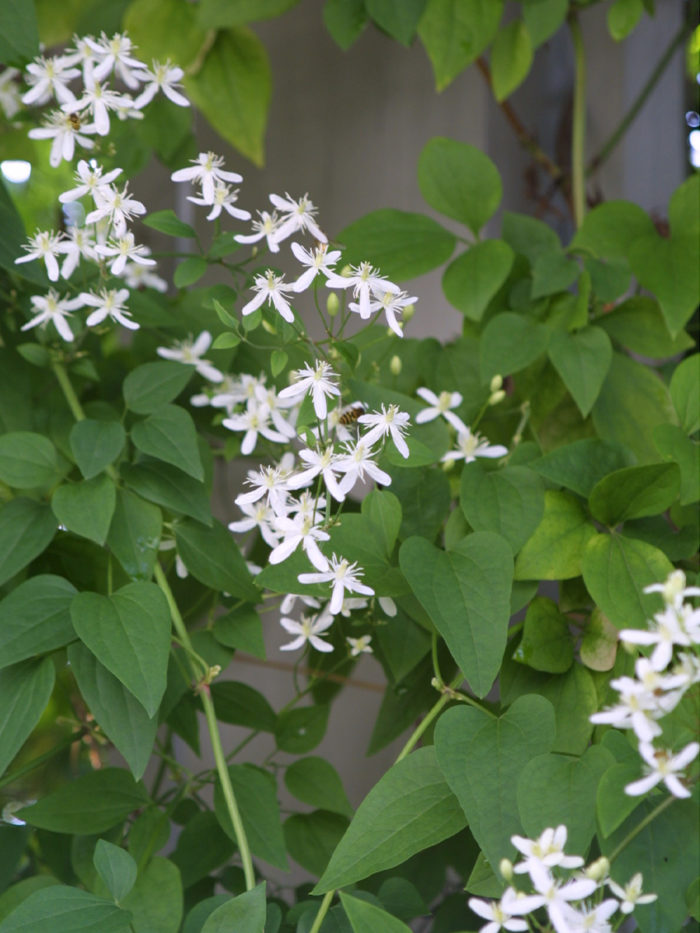
As the heat of summer wanes into the cooler days and chilly nights of fall, our gardens undergo another seasonal transition. While we often focus on the golds, russets, and reds of fall foliage, there are some flowering plants that are just hitting their stride in autumn. They provide pops of color in fall gardens to complement the harvest-time hues of fading foliage. These plants are also essential to bees and native pollinators as they get ready for the winter that lies ahead.
In addition to the more common mums (Chrysanthemum spp. and cvs., Zones 5–9) and asters (Symphyotrichum spp. and cvs., Zones 4–8), we have several interesting flowering plants that flourish in our Mountain West autumn landscapes. I wanted to share a few of my favorites with you.
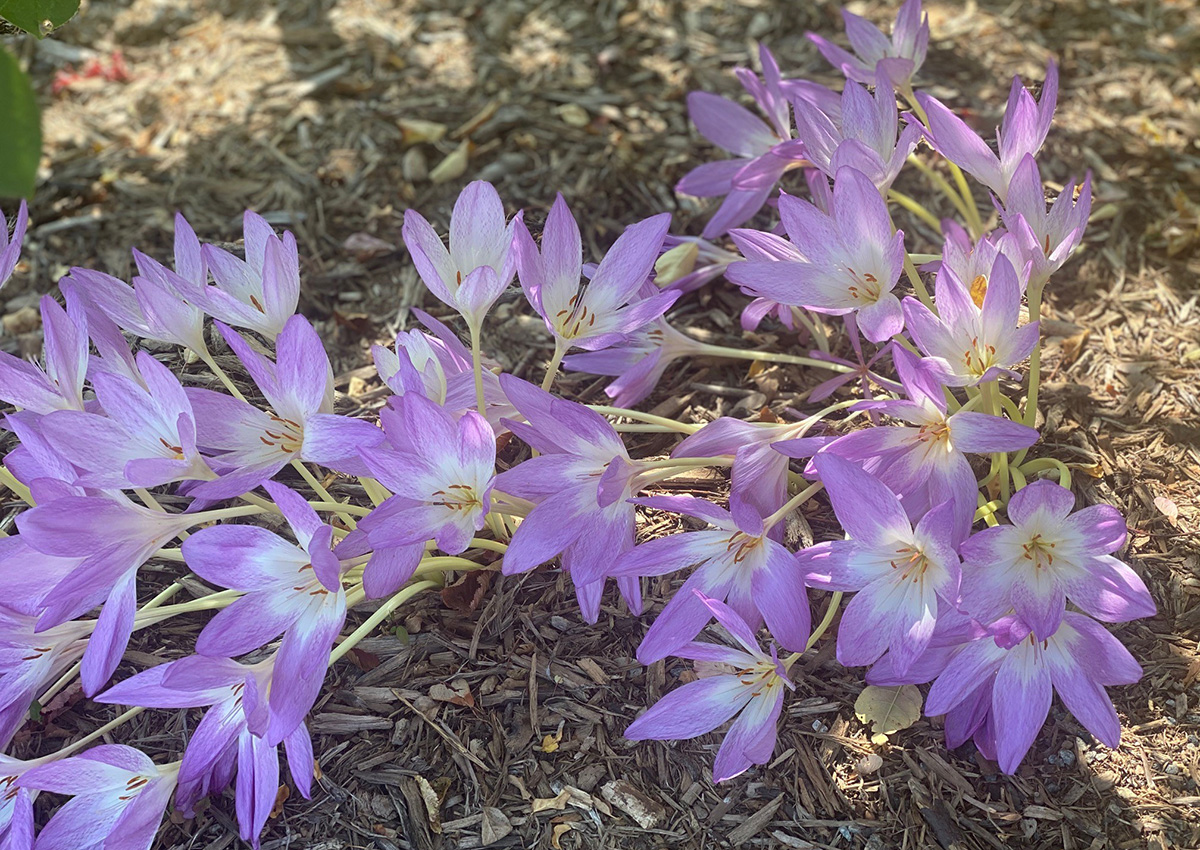
Giant autumn crocus
Colchicum giganteum, Zones 4–8
Conditions: Full to partial sun
Mature size: 8 to 12 inches tall and 8 to 12 inches wide
Just when you think nothing else could possibly emerge from the soil for the warm season—surprise! Giant autumn crocus puts on a show in the month of September. While not technically a crocus (Crocus spp. and cvs., Zones 3–8), it is called so due to the similarities of the flower shape. Leaves emerge in spring and die back in summer to be followed by large pink-and-white flowers with yellow stamens that spread out wider than the typical spring-blooming crocus. It truly is a show-stopper and generates lots of interest and comments from neighbors. Please note: this plant is toxic and should not be ingested.
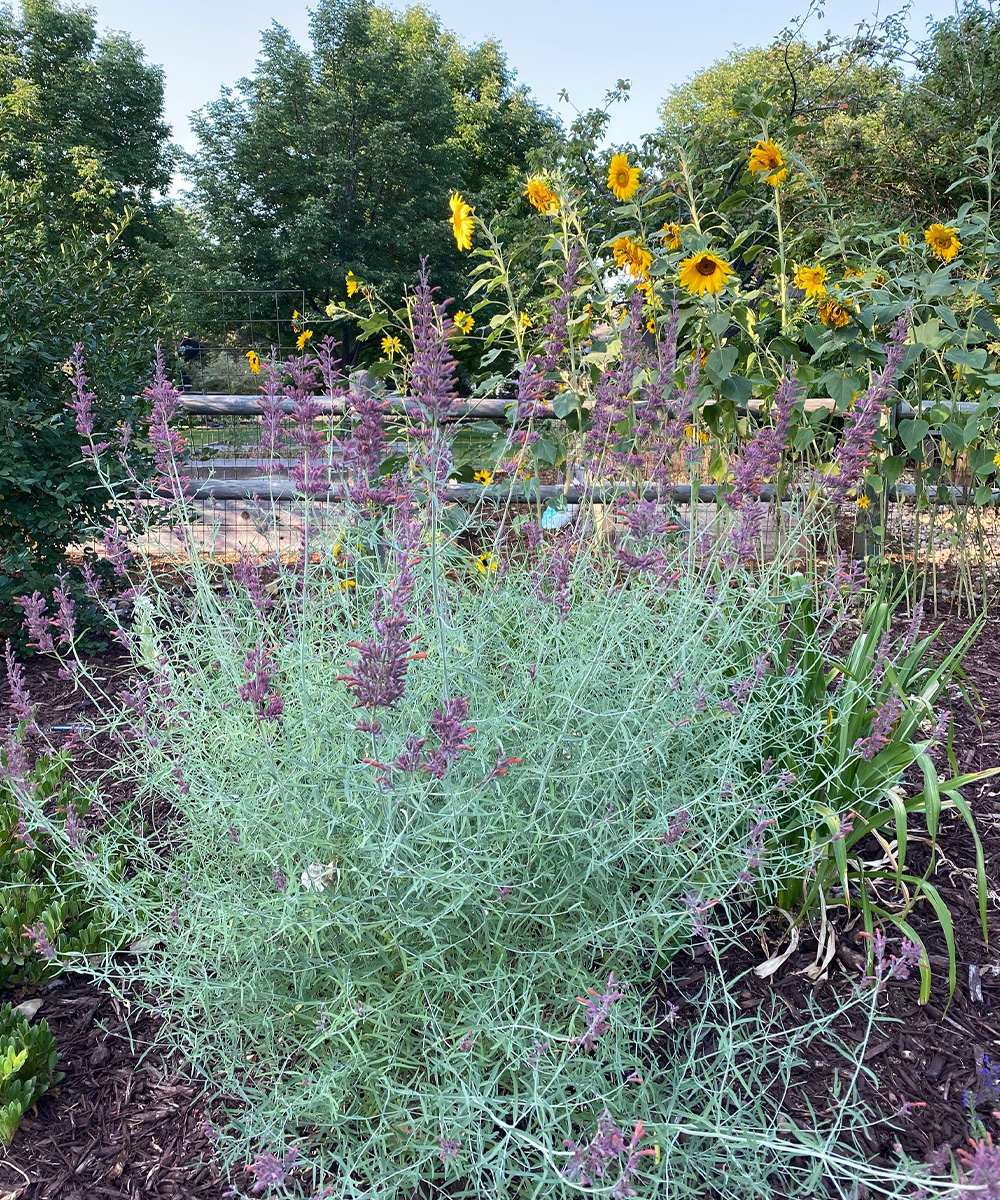
Licorice mint agastache
Agastache rupestris, Zones 5–9
Conditions: Full sun
Mature size: 3 to 4 feet tall and 2 feet wide
I have many favorite plants, and agastaches (Agastache spp. and cvs., Zones 6–11) are on the list. They are very easy to grow, and little care is required. Additionally, they bloom for a long period of time. This variety starts blooming in late summer and continues through fall. The orange-and-purple flowers remind me of the colors of our amazing sunsets, and the fine blue-gray foliage provides interesting texture throughout the season. The licorice aroma is an added benefit. Don’t forget about the hummingbirds. They love it!

Baby blue rabbitbrush
Chrysothamnus nauseosus var. nauseosus, Zones 4–9
Conditions: Full to partial sun
Mature size: 1 to 3 feet tall and 2 to 3 feet wide
One of our native shrubs, this dwarf variety of rabbitrush is perfect for small spaces. It has fine, needle-like, blue-green foliage that is covered in bright yellow blooms from September all the way through November. Our native butterflies love it, and once established (after a year or so), it does not need supplemental watering. In the wild, this plant gets “deadheaded” by grazing animals, which help keep its shape and minimize reseeding. In gardens, it is best to trim off the spent flowers at the end of the season.
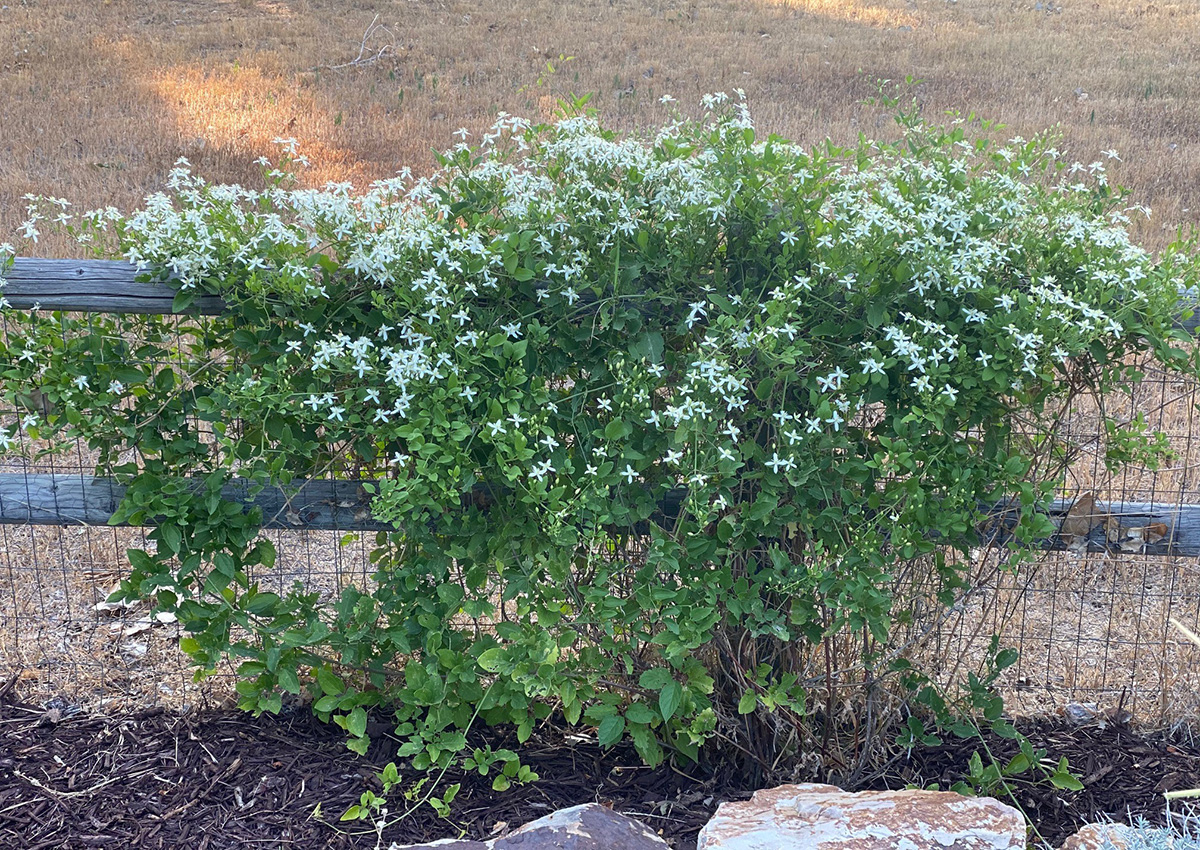
Sweet autumn clematis
Clematis terniflora, Zones 4–9
Conditions: Full to partial sun
Mature size: Up to 20 feet tall and 2 feet wide
While this vine can be invasive in some parts of the country due to self-seeding, I have never seen it be an issue in the Mountain West. The white, star-shaped flowers cover the vine throughout September. Their sweet smell reminds me of the scent of honeysuckle. While this clematis should technically be pruned back hard each year to promote blooming on new wood, I will confess to being lazy and not doing much pruning. So far, I haven’t had any issues because of this, and the vine is doing a beautiful job covering my fence, as you can see in the photo.
If you ever have freezing temperatures and several inches of snow in September, I am happy to report that all of these plants make it through with flying colors. They may even look a bit better than they would have otherwise due to the natural moisture they receive in these situations—a significant amount given the droughts we sometimes have.
For more fall flowers for the Mountain West, read along here:
- Late-Season Wonders for the Mountain West
- Perennials for Fall Color and Interest in the Mountain West
—Michelle Provaznik is executive director of the Gardens on Spring Creek in Fort Collins, Colorado.





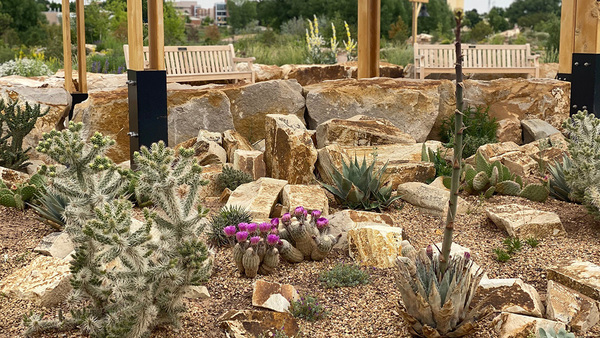












Comments
Log in or create an account to post a comment.
Sign up Log in